|
High Street Detail , Blisworth, Northamptonshire, UK. |
|
 |
This is a section of the 1838 Grafton Survey map. It serves to show that three present day cottages (38, 40 & 42) that were once subdivided were set as one continuous row. The bakehouse is that identified in c. 1700. John Staughton (Stalton) is recorded a farmer in the 1727 Grafton Survey and a baker in his 1701 certification to use his house as a baptist meeting house. The site of the bakehouse is pictured below. The row of cottages are listed buildings.
|
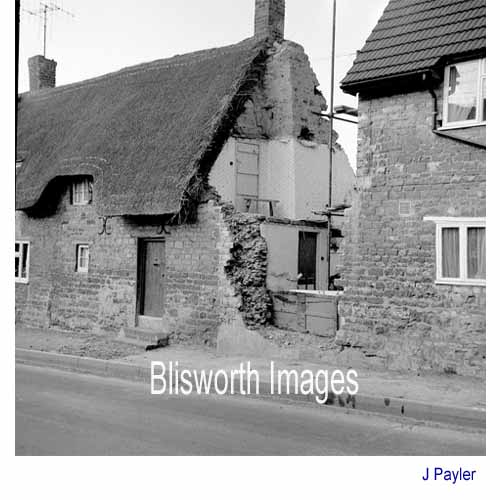 |
16-181 In 1961, occupants of number 40 decided to take down a part of their house in order to gain direct access to their rear garden. Up till then they had to go around the back of number 38. At this stage one can see the disused bedroom door. The front door had steps which frequently "provided a good trip back from the Royal Oak" but it was converted to a window and a front door was grafted onto the new end of the house - see next picture.
|
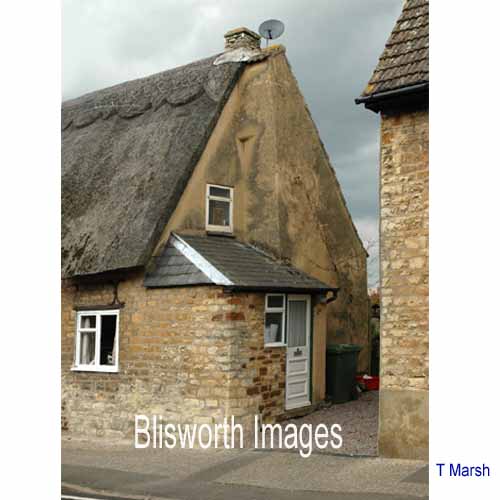 |
16-182 A picture taken in 2006 shows what the house now looks like. |
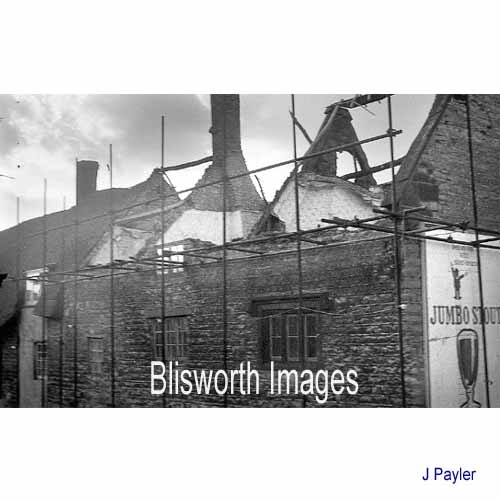 |
16-183 Just before the
alterations to number 40, the occupants at number 38 decided to replace
their thatch roof with tiles. This was in response to the fire at
the Royal Oak which demonstrated how a fire can be hard to control - see
High Street, Part II.
Another minor refinement involved having the advert for stout removed from the end wall. The village was adorned with various signs of this sort - this one provided hardly enough income per year to purchase a small crate of favourite beer! |
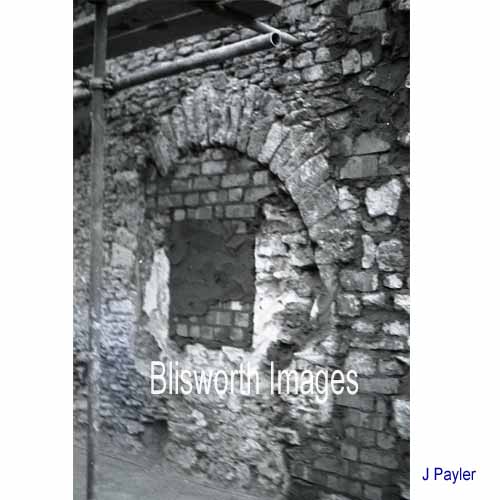 |
16-184 This is the end wall at number 38, facing number 40. Although the arch is only about 5 foot high, the indications are that there was communication between the two parts. On the number 40 side there was a substantial hollow in which there fitted a cupboard. This picture shows the hollow more-or-less filled up with new brickwork. The wall has been subsequently rendered and the owner is not at all happy with the idea that the archway might be of sufficient interest to warrant an investigation. |
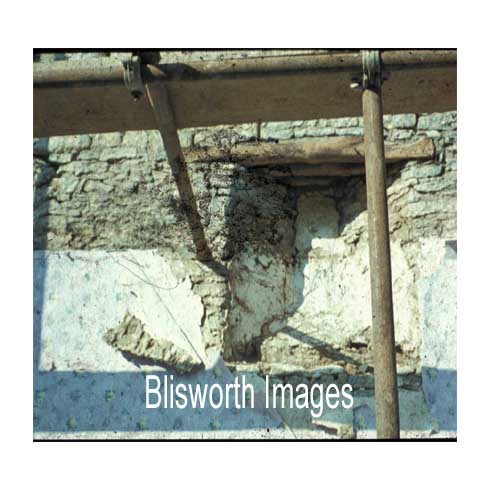 |
16-184a This flared upper window on the same wall, situated halfway into the garret, shows that whilst the gable end of No 38 stood, there was at some time no upper floor in the building at No 40. Perhaps 'No 40' was merely an extension to No 38 with access via a low archway. Could the extension have been a significant part of John Staughton's bakery - perhaps a shop? Or maybe part of his Baptists involvement - perhaps a meeting place? See footnote 1 of the article "Baptists of Blisworth" |
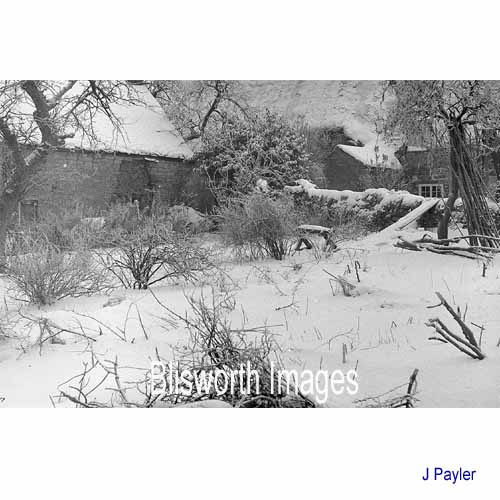 |
16-185 A view of the rear, from the garden at number 40 looking towards the remains of the old bake house at the back of number 38. This picture was taken circa 1960. The bakehouse had been taken down shortly before that date. It is referred to by an earlier owner (John Foster) in a newspaper article in 1954. |
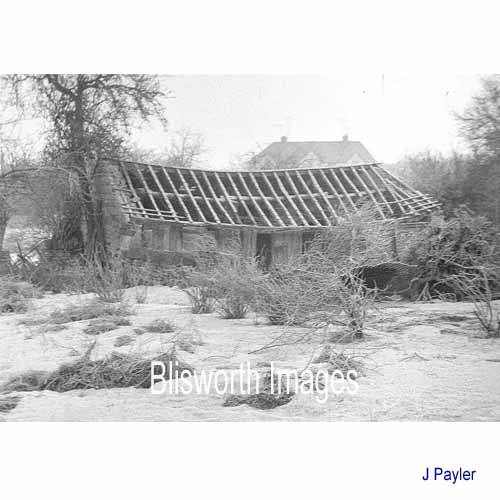 |
16-186 Number 38 rear garden also had an old stone barn which probably was used as storage in connection with baking. The site has since been taken up with garages. |